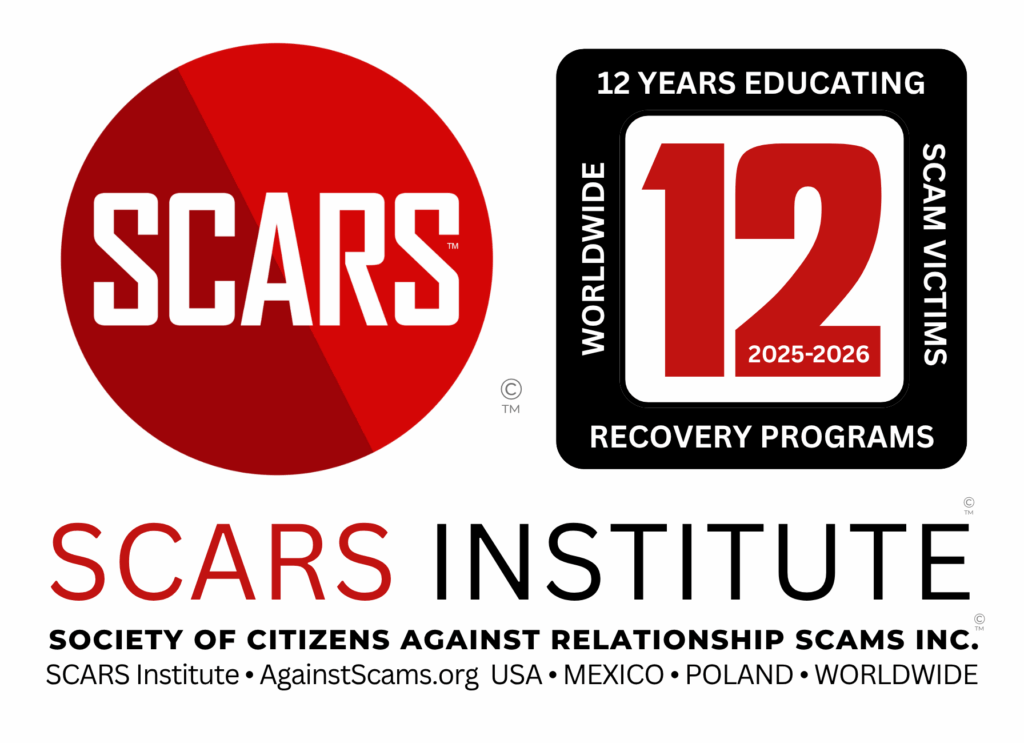
Tolerating Distress for Scam Victims
Breaking Free: Tolerating Distress as a Path to Healing for Scam Victims
Primary Category: Scam Victim Recovery Psychology
Authors:
• Vianey Gonzalez B.Sc(Psych) – Licensed Psychologist, Specialty in Crime Victim Trauma Therapy, Neuropsychologist, Certified Deception Professional, Psychology Advisory Panel & Director of the Society of Citizens Against Relationship Scams Inc.
• Tim McGuinness, Ph.D., DFin, MCPO, MAnth – Anthropologist, Scientist, Polymath, Director of the Society of Citizens Against Relationship Scams Inc.
Author Biographies Below
About This Article
The journey to understanding and managing emotional distress for scam victims is a complex and deeply personal process. By understanding the distinction between stress and distress, victims can better tailor their coping strategies and seek the appropriate support. Building distress tolerance involves a combination of expert strategies, including mindfulness, deep breathing, and gradual exposure, which help victims develop resilience and emotional regulation. Working with the body and nervous system through practices like yoga, somatic experiencing, and biofeedback can further enhance the capacity to manage distress. Additionally, co-regulation strategies, such as seeking support from loved ones and joining support groups, provide a sense of connection and stability. By embracing these techniques and recognizing the importance of self-compassion, victims can transform their relationship with distress, paving the way for healing and a more resilient future.
Note: This article is intended for informational purposes and does not replace professional medical advice. If you are experiencing distress, please consult a qualified mental health professional.

Breaking Free: Tolerating Distress as a Path to Healing for Scam Victims
As a scam victim, you’ve likely experienced a whirlwind of emotions that can feel overwhelming and unbearable. The trauma of betrayal, loss, and humiliation will leave you feeling like you’re trapped in a cage of your own emotions, desperate to escape the discomfort. But what if we told you that tolerating these uncomfortable feelings is actually a key to your healing and freedom? Let’s explore how you can learn to embrace distress as a stepping stone to a more resilient and fulfilled life.
How to Accept the Benefits of Tolerating Distress
You might be thinking, “Why on earth would I want to feel more distress when I’m already struggling?” It’s a valid question, and one that many scam victims ask themselves. The truth is, tolerating distress is not about seeking out more pain, but about developing the strength and resilience to navigate life’s challenges with grace and confidence.
Imagine distress as a muscle. When you avoid uncomfortable emotions, it’s like avoiding the gym; your “distress muscle” stays weak and underdeveloped. But when you choose to face your feelings head-on, you’re exercising that muscle, making it stronger and more capable of handling life’s ups and downs. This newfound strength allows you to respond to future challenges with calm and clarity, rather than being swept away by a tide of emotions.
Additionally, tolerating distress can lead to a deeper sense of self-understanding and acceptance. By sitting with your emotions, you gain insights into your own needs, desires, and boundaries. This self-awareness (mindfulness) is invaluable in rebuilding your life and forming healthier relationships. You begin to recognize that your emotions, no matter how uncomfortable, are valid and a natural part of your healing journey.
Expert Strategies to Help Victims Build Distress Tolerance
As a scam victim, you’ve likely found yourself in a whirlwind of emotions that can feel overwhelming and all-consuming. It’s a place where every trigger, every reminder, and every unexpected emotion can send you spiraling back into a state of distress that feels impossible to escape.
But this very distress, as uncomfortable as it may be, is actually a key to your healing and freedom? It’s a paradox, isn’t it? That the very thing you want to avoid most is the very thing that can set you free.
Tolerating distress can lead to a deeper sense of self-understanding and acceptance. By sitting with your emotions, you gain insights into your own needs, desires, and boundaries. This self-awareness is invaluable in rebuilding your life and forming healthier relationships. You begin to recognize that your emotions, no matter how uncomfortable, are valid and a natural part of your healing journey.
Here’s the thing: building distress tolerance is a journey, and like any journey, it requires a map and some reliable tools. That’s where expert strategies come in. These are not just techniques to get you through the day; they are powerful tools designed to help you build a resilient foundation that can withstand the storms of life. They are your compass, guiding you through the uncharted territories of your emotions, helping you to navigate the twists and turns with confidence and clarity.
Remember, you are not alone in this journey. Many others have walked this path and found ways to heal and thrive. With patience, self-compassion, and the right support, you too can transform your relationship with distress and reclaim your power to live a life defined by strength, wisdom, and emotional freedom. So, let’s embark on this journey together, one step at a time, and discover the incredible resilience that lies within you.
The Steps
Building distress tolerance is a gradual process, but with the right strategies, you can develop the resilience you need to thrive.
Here are some expert-recommended techniques to help you on your journey:
- Mindfulness and Meditation: Practicing mindfulness involves focusing on the present moment without judgment. Meditation can help you observe your emotions as they arise, acknowledging them without becoming overwhelmed. Start with short sessions, even just a few minutes a day, and gradually increase the duration as you become more comfortable.
- Deep Breathing Exercises: When you feel distressed, your breath often becomes shallow and rapid. Deep breathing can help you regain control and calm your nervous system. Try the “4-7-8” technique: inhale for 4 seconds, hold your breath for 7 seconds, and exhale for 8 seconds. Repeat this cycle several times to help you feel more centered.
- Grounding Techniques: Grounding exercises help you connect with the present moment and reduce feelings of dissociation or overwhelm. One effective method is the “5-4-3-2-1” technique, where you name 5 things you can see, 4 things you can touch, 3 things you can hear, 2 things you can smell, and 1 thing you can taste. This sensory engagement can help anchor you in reality and reduce distress.
- Cognitive Reframing: Challenge negative thought patterns by reframing them in a more balanced and realistic light. For example, instead of thinking, “I can’t handle this pain,” try, “This feeling is uncomfortable, but I have the strength to face it.” Reframing helps you view distress as a temporary state rather than a permanent condition.
- Gradual Exposure: Slowly expose yourself to situations or thoughts that trigger distress. Start with small steps and gradually increase the intensity as you become more comfortable. This controlled exposure helps desensitize you to distressing stimuli and builds your tolerance over time.
Recognizing Stress vs. Distress: Why the Distinction Matters
Understanding the difference between stress and distress is a pivotal moment in your healing journey. It’s like learning to tell the difference between a gentle rain and a torrential downpour—both are forms of water, but they require very different responses. Stress is a normal, even necessary, part of life. It’s the body’s way of preparing you to face challenges and can be a powerful motivator. Think of it as a temporary storm that rolls in, brings a bit of chaos, but eventually passes, leaving you stronger and more resilient. Distress, on the other hand, is a more intense and prolonged state of emotional turmoil that can feel like being caught in a relentless hurricane, with no end in sight.
Stress
Stress often manifests in ways that are manageable and even familiar. You might feel a bit more anxious than usual, experience some irritability, or find it harder to concentrate. These symptoms are often situational and can be alleviated by addressing the underlying cause or taking some time to recharge. For example, if you’re feeling stressed about an upcoming deadline, breaking the task into smaller, manageable steps or taking a short break to practice deep breathing can make a significant difference. Stress is like a muscle that, when exercised appropriately, can grow stronger. It’s a signal that you’re pushing your boundaries, and with the right tools, you can turn that stress into a source of growth and achievement.
Distress
Distress, however, is a different beast altogether. It’s characterized by intense emotions such as fear, sadness, or anger that persist long after the initial trigger has passed. Unlike stress, which is often situational and temporary, distress can feel like a constant companion, shadowing your every move and coloring your perception of the world. It can lead to feelings of hopelessness, dissociation, and a profound sense of being trapped in your own mind. You might find yourself reliving the trauma of the scam over and over, unable to escape the cycle of negative thoughts and emotions. This persistent state of distress can erode your sense of self, making it difficult to engage with the world and find joy in the things you once loved.
The Distinction
Recognizing the distinction between stress and distress is critical because it allows you to tailor your response appropriately. If you’re experiencing stress, you might benefit from simple relaxation techniques or time management strategies. These tools can help you regain a sense of control and balance, allowing you to navigate the challenges of your day with greater ease. For example, practicing mindfulness meditation for just a few minutes each day can help you stay present and reduce the impact of stress on your overall well-being. Similarly, learning to prioritize your tasks and delegate when possible can prevent stress from building up to unmanageable levels.
However, if you’re dealing with distress, you may need more intensive support, such as therapy or a structured distress tolerance program. Distress requires a deeper, more comprehensive approach to healing. It’s not just about managing symptoms in the moment but about addressing the root causes of your emotional turmoil and developing the resilience to withstand future challenges. Therapy can provide you with a safe space to explore your emotions, gain insights into your experiences, and develop coping strategies that are tailored to your unique needs. A distress tolerance program, on the other hand, offers a structured approach to building your emotional resilience, teaching you skills such as emotional regulation, grounding techniques, and self-compassion.
Recognizing the difference between stress and distress can help you avoid the pitfall of minimizing your experiences. It’s easy to dismiss distress as “just stress” and try to power through, but doing so can actually exacerbate your symptoms and prolong your suffering. By acknowledging that you’re dealing with distress, you’re taking the first step towards seeking the help you need and deserve. It’s a powerful act of self-compassion, one that can open the door to healing and growth.
In your journey, understanding the difference between stress and distress is a key that can unlock new levels of self-awareness and emotional intelligence. It’s about learning to listen to your body and your mind, to recognize the signs that you’re in a state of distress, and to take proactive steps to address it. Remember, you don’t have to suffer in silence. There are tools, strategies, and support systems available to help you navigate the complexities of your emotions and emerge stronger on the other side.
Take a moment to reflect on your current state. Are you feeling the gentle nudge of stress, or the overwhelming pull of distress? Whatever you’re experiencing, know that it’s valid, and that there are ways to move forward. With patience, self-compassion, and the right support, you can transform your relationship with your emotions and reclaim your power to live a life defined by resilience, hope, and emotional freedom.
Working with Emotional Distress at the Level of the Nervous System
Your nervous system plays a crucial role in how you experience and respond to distress. When you’re in a state of distress, your sympathetic nervous system (the “fight or flight” response) is activated, releasing hormones like adrenaline and cortisol. This physiological response can make you feel agitated, anxious, and on edge.
To work with emotional distress at the level of the nervous system, you can employ techniques that promote a shift from sympathetic to parasympathetic activation (the “rest and digest” response). Here are some effective strategies:
- Heart-Coherent Breathing: This involves breathing in a specific pattern to synchronize your heart rate and breathing, promoting a state of calm and coherence. Try inhaling for 5 seconds and exhaling for 5 seconds, focusing on the rhythm and sensation of your breath.
- Progressive Muscle Relaxation: This technique involves tensing and then relaxing different muscle groups in your body, one at a time. By doing so, you become aware of physical sensations and learn to release tension, signaling to your nervous system that it’s safe to relax.
- Biofeedback: Biofeedback uses electronic monitoring to provide real-time feedback on physiological functions such as heart rate, muscle tension, and skin conductance. By learning to control these functions, you can gain greater mastery over your stress response and reduce distress.
- Neurofeedback: This is a type of biofeedback that focuses on brain activity. By training your brain to produce specific patterns of activity, you can improve emotional regulation and reduce distress. Neurofeedback can be particularly effective for those struggling with trauma-related symptoms.
Working with the Body to Grow Your Capacity to Manage Distress
Your body is a powerful ally in managing distress. By engaging in physical activities and practices that promote bodily awareness, you can enhance your capacity to tolerate and process uncomfortable emotions. Here are some ways to work with your body to build resilience:
- Yoga and Stretching: Yoga combines physical postures, breathing exercises, and meditation to promote flexibility, strength, and mindfulness. Regular practice can help you develop a greater sense of bodily awareness and control, making it easier to manage distress when it arises.
- Exercise: Regular physical activity releases endorphins, which are natural mood elevators. Whether it’s walking, running, swimming, or dancing, finding an exercise you enjoy can provide a healthy outlet for stress and improve your overall sense of well-being.
- Somatic Experiencing: This body-oriented therapy helps you release traumatic energy stored in the body. By focusing on bodily sensations and gentle movements, you can process and integrate traumatic experiences, reducing their emotional impact over time.
- Massage and Bodywork: Techniques such as massage, acupuncture, and craniosacral therapy can help release physical tension and promote relaxation. These practices can provide a sense of safety and comfort, making it easier to tolerate distressing emotions.
- Dance and Movement Therapy: Engaging in expressive movement can help you connect with your emotions on a deeper level. Dance therapy, for example, allows you to explore and release feelings through creative expression, providing a non-verbal outlet for distress.
Co-Regulation Strategies to Dial Down Distress
Co-regulation involves using the presence and support of others to help manage your emotional state. When you’re feeling distressed, connecting with someone who can provide a sense of safety and stability can be incredibly beneficial. Here are some co-regulation strategies to help you dial down distress:
- Seek Support from Loved Ones: Reach out to friends, family, or trusted colleagues who can offer a listening ear and a shoulder to lean on. Sharing your feelings with someone who cares about you can provide comfort and perspective, helping to reduce the intensity of your distress.
- Join a Support Group: Connecting with others who have gone through similar experiences can be incredibly validating and healing. Support groups provide a safe space to share your story, learn from others, and gain a sense of community and belonging. You can join a SCARS Institute support group at www.SCARScommunity.org
- Work with a Therapist: A mental health professional can offer guidance, tools, and techniques to help you manage distress. Therapists provide a non-judgmental space where you can explore your emotions, gain insights, and develop coping strategies tailored to your needs.
- Practice Active Listening: When you’re with someone you trust, practice active listening by fully engaging in the conversation and showing empathy. This mutual exchange can help you feel understood and supported, reducing feelings of isolation and distress.
- Engage in Shared Activities: Participating in activities with others, such as hiking, cooking, or volunteering, can provide a sense of connection and purpose. These shared experiences can distract from distressing thoughts and emotions, while also fostering a sense of community and support.
- Use Technology for Connection: In today’s digital age, there are numerous online platforms and apps that can facilitate co-regulation. Video calls, messaging apps, and online forums can help you stay connected with others, even when you’re not physically together.
Conclusion
Tolerating distress is not about seeking out more pain, but about developing the strength and resilience to navigate life’s challenges with grace and confidence. By understanding the benefits of distress tolerance, employing expert strategies, recognizing the difference between stress and distress, working with your nervous system, engaging your body, and utilizing co-regulation strategies, you can break free from the cage of uncomfortable emotions and embrace a more fulfilling and resilient life.
Remember, you are not alone in this journey. Many others have walked this path and found ways to heal and thrive. With patience, self-compassion, and the right support, you too can transform your relationship with distress and reclaim your power to live a life defined by strength, wisdom, and emotional freedom.

Glossary
- Acceptance vs avoidance — This concept contrasts leaning into tolerable discomfort with running from it. Choosing acceptance in small, safe steps builds capacity and reduces panic over time. Avoidance shrinks life and often keeps symptoms looping.
- Active listening stance — This describes a calm, attentive way of hearing supportive people. It favors eye contact, simple reflections, and open questions. Being heard in this manner steadies emotions and lowers isolation.
- Biofeedback training — This technique uses sensors to show heart rate, breathing, or skin tension in real time. Seeing the numbers change helps a person learn voluntary control. Regular practice increases calm during spikes of distress.
- Body-based grounding — This set of skills anchors attention in physical sensations like feet on the floor or hands on a cool surface. The body’s signals pull focus away from racing thoughts. Grounding restores a sense of here and now.
- Breath pacing 4-7-8 — This breathing drill follows a count of inhale four, hold seven, exhale eight. The long exhale slows the heart and quiets alarm signals. A few rounds can reduce dizziness, trembling, and urgency.
- Co-regulation plan — This is a written list of people and ways to connect when emotions surge. It may include call times, preferred topics, and brief check-ins. Planned support makes help easier to reach when thinking is foggy.
- Compassionate limit-setting — This approach sets clear personal limits without self-criticism. It uses simple language and consistent follow-through. Limits protect time, sleep, and money while trust is rebuilt.
- Crisis survival box — This is a small kit prepared in advance for rough moments. It holds soothing items, skills cards, hotlines, and reminders of reasons to keep going. Reaching for the box shortens emotional free falls.
- Dance and movement therapy — This therapy uses guided movement to express and release emotion. No prior skill is required. Moving feelings through the body can reduce tension and restore a sense of agency.
- Distress ladder — This tool ranks triggers from easiest to hardest. Progress starts at lower rungs and moves up slowly. Climbing the ladder builds confidence without overwhelming the system.
- Distress tolerance — This skill set helps a person stay present with hard feelings without harmful actions. Short, specific techniques lower the intensity until waves pass. Tolerance grows like a muscle through practice.
- Distress vs stress distinction — This distinction separates normal pressure from prolonged overwhelm. Stress eases with rest and simple planning, while distress lingers and narrows life. Naming the difference guides the right level of help.
- Emotion labeling — This practice names feelings with specific words such as fear, grief, or anger. Accurate labels lower intensity and point to useful tools. A feelings list or wheel can support learning.
- Exposure ladder — This plan introduces feared thoughts or places in small, timed steps. Each step is rehearsed until it feels manageable. Gentle exposure teaches the brain that safety has returned.
- Grounding 5-4-3-2-1 — This exercise lists five things seen, four touched, three heard, two smelled, and one tasted. Sensory focus interrupts spirals and anchors attention. It works in public without drawing notice.
- Heart-coherent breathing — This breathing pattern keeps inhaling and exhaling at an even rhythm, often five seconds in and five out. The steady tempo syncs heart and breath. Many people feel calmer within a few minutes.
- Mindfulness minute — This brief practice invites full attention to one simple act, such as sipping water or noticing breath. The goal is nonjudgmental awareness. Short, frequent minutes add up to better regulation.
- Neurofeedback session — This method uses brainwave feedback to train steadier patterns. Over time, reactivity can fall and focus can improve. It is often used alongside counseling and sleep care.
- Nervous system reset — This refers to quick actions that shift the body from alarm to calm. Cold water, a paced walk, or a slow exhale can start the reset. Small resets stacked through the day prevent overload.
- Parasympathetic activation — This term describes turning on the body’s rest-and-digest system. Long exhales, safe social contact, and gentle stretching support activation. The result is a steadier mood and digestion.
- Progressive muscle relaxation — This method tenses and releases muscle groups from feet-to-face. The contrast teaches the body to notice and drop tension. A script or audio guide helps beginners.
- Regulated routine — This is a simple daily rhythm that protects sleep, meals, movement, and connection. Predictable cues reassure a jumpy system. Routines make hard days more workable.
- Self-anchoring statement — This is a short phrase that reminds a person of safety and choices. Examples include “I can pause” or “This feeling will pass.” Repeating the line reduces urgency and guides behavior.
- Sleep hygiene — This set of habits improves sleep quality. It favors a steady bedtime, dark rooms, and reduced late caffeine or screens. Better sleep lowers next-day reactivity.
- Somatic experiencing — This body-focused therapy helps discharge stored survival energy through gentle attention and movement. Sessions track sensations without retelling every detail. Many people report less startle and more steadiness.
- Support circle — This is a small group of trusted people who agree to mutual check-ins. Roles and boundaries are discussed in advance. A circle reduces loneliness and spreads the weight of recovery.
- Therapeutic alliance — This term describes the working bond between client and therapist. Clear goals, respect, and steady contact make the alliance strong. A good alliance predicts better outcomes.
- Trigger mapping — This process lists sights, sounds, dates, and topics that spike reactions. Maps also include early signs and helpful responses. Knowing the map turns surprises into manageable moments.
- Urge surfing — This technique treats urges like ocean waves that rise, peak, and fall. Breathing and attention ride the wave without acting on it. Most urges fade within minutes when surfed.
- Vagal toning — This set of practices strengthens the nerve pathway that supports calm. Humming, gentle neck stretches, and slow breathing are common options. A stronger tone means faster recovery after spikes.
- Window of tolerance — This concept defines the range of arousal where thinking and feeling stay workable. Skills widen the window; overload narrows it. Working inside the window makes healing safer.
- Yoga for regulation — This is a gentle practice that pairs movement with breath. Short routines improve balance, interoception, and calm. Trauma-sensitive classes avoid pressure and invite choice.
- Zero-tech calming — This approach uses no devices so it works anywhere. Options include a walk, a cup of tea, a shower, or writing by hand. Low-tech tools are reliable when batteries and bandwidth fail.
Author Biographies
Please Rate This Article
Please Leave Us Your Comment Below
Also, tell us of any topics we might have missed.
-/ 30 /-
What do you think about this?
Please share your thoughts in a comment above!
ARTICLE RATING
TABLE OF CONTENTS
CATEGORIES
U.S. & Canada Suicide Lifeline 988
![NavyLogo@4x-81[1] Tolerating Distress for Scam Victims - 2025](https://scamsnow.com/wp-content/uploads/2025/04/NavyLogo@4x-811.png)
ARTICLE META
2 Comments
Leave A Comment
Important Information for New Scam Victims
- Please visit www.ScamVictimsSupport.org – a SCARS Website for New Scam Victims & Sextortion Victims.
- SCARS Institute now offers its free, safe, and private Scam Survivor’s Support Community at www.SCARScommunity.org – this is not on a social media platform, it is our own safe & secure platform created by the SCARS Institute especially for scam victims & survivors.
- SCARS Institute now offers a free recovery learning program at www.SCARSeducation.org.
- Please visit www.ScamPsychology.org – to more fully understand the psychological concepts involved in scams and scam victim recovery.
If you are looking for local trauma counselors, please visit counseling.AgainstScams.org
If you need to speak with someone now, you can dial 988 or find phone numbers for crisis hotlines all around the world here: www.opencounseling.com/suicide-hotlines
Statement About Victim Blaming
Some of our articles discuss various aspects of victims. This is both about better understanding victims (the science of victimology) and their behaviors and psychology. This helps us to educate victims/survivors about why these crimes happened and not to blame themselves, better develop recovery programs, and help victims avoid scams in the future. At times, this may sound like blaming the victim, but it does not blame scam victims; we are simply explaining the hows and whys of the experience victims have.
These articles, about the Psychology of Scams or Victim Psychology – meaning that all humans have psychological or cognitive characteristics in common that can either be exploited or work against us – help us all to understand the unique challenges victims face before, during, and after scams, fraud, or cybercrimes. These sometimes talk about some of the vulnerabilities the scammers exploit. Victims rarely have control of them or are even aware of them, until something like a scam happens, and then they can learn how their mind works and how to overcome these mechanisms.
Articles like these help victims and others understand these processes and how to help prevent them from being exploited again or to help them recover more easily by understanding their post-scam behaviors. Learn more about the Psychology of Scams at www.ScamPsychology.org
SCARS INSTITUTE RESOURCES:
If You Have Been Victimized By A Scam Or Cybercrime
♦ If you are a victim of scams, go to www.ScamVictimsSupport.org for real knowledge and help
♦ SCARS Institute now offers its free, safe, and private Scam Survivor’s Support Community at www.SCARScommunity.org – this is not on a social media platform, it is our own safe & secure platform created by the SCARS Institute especially for scam victims & survivors.
♦ Enroll in SCARS Scam Survivor’s School now at www.SCARSeducation.org
♦ To report criminals, visit https://reporting.AgainstScams.org – we will NEVER give your data to money recovery companies like some do!
♦ Follow us and find our podcasts, webinars, and helpful videos on YouTube: https://www.youtube.com/@RomancescamsNowcom
♦ Learn about the Psychology of Scams at www.ScamPsychology.org
♦ Dig deeper into the reality of scams, fraud, and cybercrime at www.ScamsNOW.com and www.RomanceScamsNOW.com
♦ Scam Survivor’s Stories: www.ScamSurvivorStories.org
♦ For Scam Victim Advocates visit www.ScamVictimsAdvocates.org
♦ See more scammer photos on www.ScammerPhotos.com
You can also find the SCARS Institute’s knowledge and information on Facebook, Instagram, X, LinkedIn, and TruthSocial
Psychology Disclaimer:
All articles about psychology and the human brain on this website are for information & education only
The information provided in this and other SCARS articles are intended for educational and self-help purposes only and should not be construed as a substitute for professional therapy or counseling.
Note about Mindfulness: Mindfulness practices have the potential to create psychological distress for some individuals. Please consult a mental health professional or experienced meditation instructor for guidance should you encounter difficulties.
While any self-help techniques outlined herein may be beneficial for scam victims seeking to recover from their experience and move towards recovery, it is important to consult with a qualified mental health professional before initiating any course of action. Each individual’s experience and needs are unique, and what works for one person may not be suitable for another.
Additionally, any approach may not be appropriate for individuals with certain pre-existing mental health conditions or trauma histories. It is advisable to seek guidance from a licensed therapist or counselor who can provide personalized support, guidance, and treatment tailored to your specific needs.
If you are experiencing significant distress or emotional difficulties related to a scam or other traumatic event, please consult your doctor or mental health provider for appropriate care and support.
Also read our SCARS Institute Statement about Professional Care for Scam Victims – click here
If you are in crisis, feeling desperate, or in despair, please call 988 or your local crisis hotline.
More ScamsNOW.com Articles
A Question of Trust
At the SCARS Institute, we invite you to do your own research on the topics we speak about and publish. Our team investigates the subject being discussed, especially when it comes to understanding the scam victims-survivors’ experience. You can do Google searches, but in many cases, you will have to wade through scientific papers and studies. However, remember that biases and perspectives matter and influence the outcome. Regardless, we encourage you to explore these topics as thoroughly as you can for your own awareness.























![scars-institute[1] Tolerating Distress for Scam Victims - 2025](https://scamsnow.com/wp-content/uploads/2025/04/scars-institute1.png)
![niprc1.png1_-150×1501-1[1] Tolerating Distress for Scam Victims - 2025](https://scamsnow.com/wp-content/uploads/2025/04/niprc1.png1_-150x1501-11.webp)

Very good article. Determining stress versus distress seems to be my mantra lately. My therapist is challenging me to complete my Parts workbook each appointment. And I try! I do. But I pick up am that workbook to try again; the exercise of confronting those memories to identify which part is speaking or controlling me is distressing. I feel so much grief, terror, abandonment. I grew up in a time when talking to a therapist was taboo, talking like there were different parts inside you was schizophrenic. To acknowledge these parts was unknown. I never even knew that I had “parts”, the exile, the harsh critic, a protector, what???
Not only is this exercise distressing it can sometimes lead to stress which leads me to self medication through food.
Yet even through all of this I lessened internalizing emotions, I began standing up for myself, I am beginning to learn how to ground myself. All important steps.
Attempts to escape stress or distress only exacerbate them.
Let us not run away from them. Let us learn to tolerate them, using the strategies presented here, to strengthen our resilience and resistance, which are essential for facing the next challenges of life.
Excellent article! Thank you.